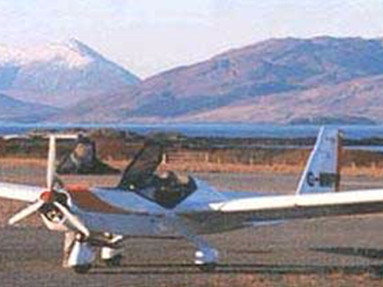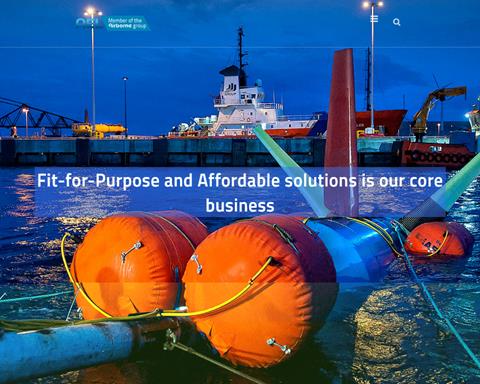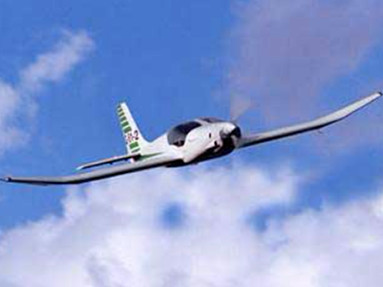
The Chevvron 2-32C 2 seat Microlight aircraft. Possibly the quietest production aircraft available and with an impeccable safety record. 40 sold worldwide to date. As close as you can get to a Microlight Motorglider at a fraction of the price.
AIRFRAME
The Chevron design is essentially conventional in layout and 3-axis control, making use of advanced carbon, dyneema and glass fibre technology in its construction. The wings are main spar/D box construction, featuring an advanced laminar flow airfoil section for maximum efficiency. They are fully cantilevered with the spar being joined in the centre section by two hardened steel pins and connected to the fuselage by front and rear stainless steel pick-up pins located in ball joints.
A sweepforward of 5 degrees is built in for good downward visibility and easy access while a dihedral of 5 degrees gives excellent lateral stability. The trailing edge drag flaps are very effective making accurate short landings possible with virtually no float.
The tricycle undercarriage is fitted with large tyres and hydraulic brakes on the mainwheels. The nosewheel is steerable and is linked to the adjustable rudder pedals giving a turning circle within the wingspan. The main wheels are mounted on a low drag glass fibre beam which has integral wheel fairings and is tuned to gives a firm but comfortable ride over rough grass. The undercarriage is NOT designed for operation on very rough surfaces and the advice of the manufacturer should be sought if in doubt.
The cockpit is sheathed in Kevlar or later in Carbon/dyneema cloth for impact resistance and is about 40 inches wide at shoulder level. Side-by-side seating keeps the CG within limits throughout the cockpit and fuel load range. The forward opening carbon fibre framed polycarbonate canopy is hinged to the top of the highly raked windscreen and is fitted with DV windows and fresh air vents. A large instrument panel is provided. The seating position is semi-prone on fitted cushions with four point harness as standard.
Independently adjustable rudder pedals mean that all but the very tallest crew can be accommodated in comfort for long periods. A single centre stick, or optional dual sticks, provide conventional roll and pitch control. The conventional empenage is mounted on a long rear fuselage to provide a high degree of directional stability. The fin and rudder remain rigged except for servicing but the large elevator is easily removed for trailing. The whole tail area is exceptionally stiff and affords positive control and stability throughout the flight envelope.
Access panels are provided in the rear fuselage, behind the cockpit, for rigging, inspection and fuelling. Clear inspection windows are positioned where necessary. The standard 30 ltr fuel tank behind the RH seat is made of impact resistant glass fibre and Kevlar and is fitted with an electric fuel level transmitter and a recessed filler cap. A second 30 ltr tank may be fitted as an option where cerification allows or for special approval in the UK. Both tanks are fitted with water drain valves.
POWERPLANT
Power is provided by a Konig 570cc air-cooled radial 4 cylinder 2 stroke 32 HP engine. Power is absorbed by a three blade carbon/glass fibre composite propeller driven by a toothed belt reduction gear. The 60" 3 bladed, ground adjustable pitch, propeller is mounted with down and side thrust in order to minimise swing due to prop. wash in the early ground run. The rubber drive belt in the drive chain minimises the risk of crankshaft damage in the event of touching the ground with the propeller. A solid state magneto single ignition system ensures engine operation independent of the aircraft electrical system. The high tension coils are mounted in the plug caps so avoiding high tension leads.
A 20 W,12 v DC generator and voltage regulator are provided for battery recharge. Induction is through a singleTillotson FO Float bowl carburettors Cold starting is facilitated by a convention choke control and carb. primer. HOT AIR may be selected by the pilot to alleviate carburettor icing.
SPEEDS
Airspeed limitations and their operational significance are shown below.
Vne Never exceed speed - 77 - kts ias
Do not exceed this speed in any operation.
Vc Maximum structural cruising speed - 60 kts ias
Do not exceed this speed except in smooth air, and then only with caution.
Va Manoeuvring / Rough air speed - 60 kts ias -
Max of 1/3 full control deflection.
Vfe Flap extended speed - 50 kts ias -
Do not exceed this speed with the flap extended
Vs Stalling speed - 28/30 kts - Depending on flap config and weight.
WEIGHT Kgs.
Empty weight approx 184
Max Take-Off and Landing weight 390
Max cockpit load with 30 litres (21.6 kg @ SG .72)
180 kg approx max / 55 kg min. (Up to 60 litres capacity is available as an option depending on National Regulations.)
See IAS/ EAS chart which shows that vne of 77 kts ias is 86 kts true, and correction approximately straight line to stall which is accurate.
OTHER DATA
These will vary with density altitude, weight and the condition of the aircraft, and G forces.
POWER OFF STALL Approximately 27 - 32 Kts
POWER ON STALL Approximately 26 - 31 Ktss
Take-off performance Ground run 100 m
TOD to 15m height 230 m
Landing distances Ground run 200 m
LD from 15 m height 140 m full flap to 200 m zero flap
Rate of roll 30 Deg to 30 Deg - At 40kts 3.5s
Glide Ratio (L /D) 17:1
Endurance About 3 hours (with 30 litre tank)
Fuel Economy
Power setting - Speed - Fuel litres/h
50% - 38 kts - 4.6 approx
75% - 50 kts - 7.0 approx
100 % (4,200 rpm) - 65 kts - 9.0 approx
Source: www.aviationenterprises.co.uk/avent/chevron.htm

Aviation Enterprises Ltd is an established aviation based design, development and manufacturing engineering company specialising in composite materials with special experience in sub-sea structures and fatigue. Makers of the Chevvron motor glider and the Magnum VLA.
